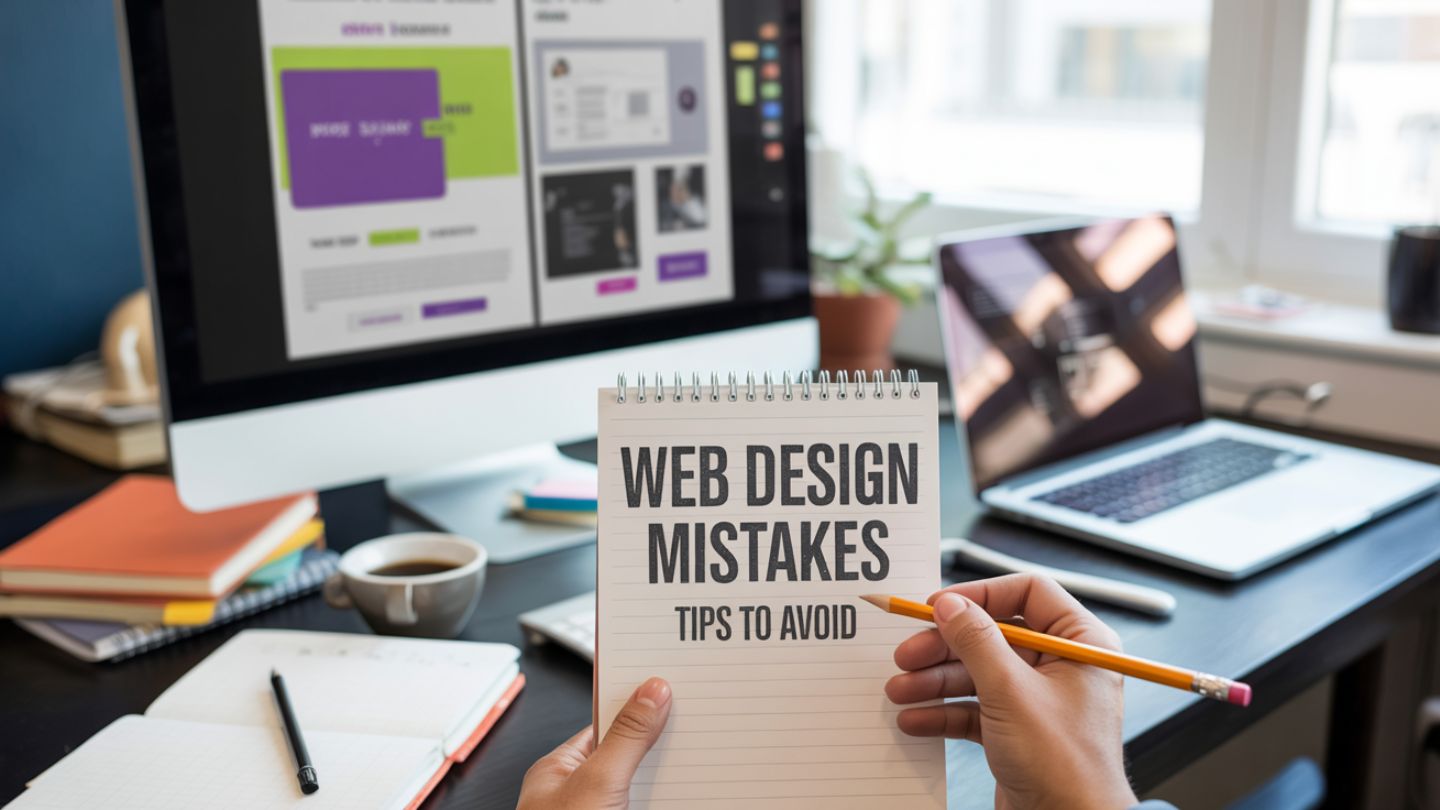
A strong online presence is essential for any small business looking to grow. Your website often serves as the first point of contact for potential customers, making its design a critical factor in your success. A well-designed site can build trust, communicate your brand’s value, and guide visitors toward making a purchase. However, many small businesses fall into common web design traps that can drive customers away and hinder growth.
These digital missteps can silently sabotage your efforts, turning your website into a liability instead of an asset. From confusing layouts to technical oversights, these errors can make it difficult for customers to find you and even harder for them to stay. This blog will walk you through the most frequent web design errors and provide actionable tips to ensure your site is a powerful tool for growth, not a digital roadblock.
1. Confusing and Cluttered Layout
One of the most common mistakes is a cluttered design. When a visitor lands on your homepage and is met with a chaotic mix of text, images, pop-ups, and competing calls-to-action, they feel overwhelmed. This visual noise makes it impossible for them to find what they’re looking for. Instead of engaging, they are more likely to leave your site and go to a competitor with a cleaner, more intuitive interface. A cluttered layout makes the user experience difficult and works against the core principles of effective digital communication.
How to Fix It:
- Embrace White Space: Negative space (or white space) is not empty space; it’s a powerful design tool. It gives your content room to breathe, improves readability, and helps guide the user’s eye to the most important elements on the page.
- Prioritize Information: Use a clear visual hierarchy. Your most important information, such as your value proposition or a key service, should be prominent. Use headings, subheadings, and bullet points to break up text and make it scannable.
- Simplify Your Navigation: Limit the number of items in your main navigation menu. Stick to essential pages like “Home,” “About Us,” “Services/Products,” and “Contact.” You can use dropdown menus or a footer menu for less critical pages.
2. Not Designing for Mobile Users
In today’s world, a significant portion of web traffic comes from mobile devices. If your website is not optimized for smartphones and tablets, you are alienating a huge segment of your potential audience. A non-responsive design forces mobile users to pinch, zoom, and scroll endlessly just to read your content. This frustrating experience almost guarantees they will not return. Ignoring mobile users is a surefire way to lose business to more forward-thinking competitors.
How to Fix It:
- Adopt Responsive Design: Responsive design allows your website layout to automatically adjust to fit the screen size of any device. This ensures a seamless and user-friendly experience for everyone, regardless of how they access your site.
- Test on Multiple Devices: Before and after launching, test your website on various smartphones and tablets. Pay attention to loading times, image scaling, and how easy it is to tap buttons and navigate menus.
- Think “Mobile-First”: Consider designing the mobile version of your site first. This approach forces you to prioritize the most essential content and features, resulting in a cleaner, more focused design that benefits both mobile and desktop users.
3. Poor SEO and Technical Oversights

Many small businesses build a beautiful website, but forget the technical foundation that makes it discoverable. Search Engine Optimization (SEO) is not an afterthought; it should be integrated into the design and development process. Issues like slow loading speeds, broken links, and a lack of keyword strategy can make your site invisible to search engines like Google. Effective search rank and position tracking becomes impossible if the site isn’t built to be found in the first place.
Moreover, in an era of new search technologies, optimizing content for generative engines is becoming increasingly important. A site with a poor technical structure will struggle to perform well in both traditional and emerging search environments.
How to Fix It:
- Optimize for Speed: Compress your images, minify code (CSS, JavaScript), and leverage browser caching. A slow website frustrates users and is penalized by search engines.
- Build a Clear Site Structure: Use a logical URL structure and internal linking strategy. It’s crucial to optimize your anchor text for internal links to help search engines understand the context of your pages and improve user navigation.
- Focus on On-Page SEO: Ensure every page has a unique title tag, meta description, and properly structured headings (H1, H2, H3). Conduct keyword research to understand what your audience is searching for and integrate those terms naturally into your content.
4. Unclear Call-to-Action (CTA)
Your website should have a purpose. Do you want visitors to buy a product, fill out a contact form, or subscribe to a newsletter? A Call-to-Action (CTA) is what directs them to take that desired step. A common mistake is having weak, hidden, or non-existent CTAs. If users don’t know what you want them to do next, they will likely do nothing at all. A clear CTA transforms a passive visitor into an active lead or customer.
How to Fix It:
- Use Action-Oriented Language: Instead of generic words like “Submit,” use descriptive and compelling text. For example, “Get Your Free Quote,” “Download the Guide,” or “Shop the Collection Now.”
- Make Them Stand Out: Your CTA buttons should be visually distinct from the rest of the page. Use contrasting colors, make them large enough to be easily seen and clicked, and place them in logical locations where a user would naturally look next.
- Have a Primary CTA: While you can have multiple CTAs on a page, there should be one primary action you want the user to take. This avoids decision fatigue and clarifies the most important conversion goal for that page.
5. Poor Readability and Accessibility

Your website’s content is there to communicate a message, but that message can get lost if the text is hard to read. Using fancy, illegible fonts, small text sizes, or low-contrast color combinations (like light gray text on a white background) can strain the eyes and make visitors give up on reading your content. Accessibility goes beyond readability, ensuring that people with disabilities can also use your site effectively.
How to Fix It:
- Choose Simple Fonts: Stick to clean, easy-to-read fonts like Arial, Helvetica, or Open Sans for your body text. You can use a more stylized font for headings, but ensure it remains legible.
- Ensure Sufficient Contrast: Use a color contrast checker to ensure your text is easily readable against its background. The standard is to have dark text on a light background or light text on a dark background.
- Use an Adequate Font Size: A font size of at least 16px is generally recommended for body text on websites to ensure comfortable reading for most users. Also, add alt text to all your images to describe them for screen readers.
Final Thoughts
Your website is far more than a digital brochure; it’s the cornerstone of your business’s online presence. By identifying and addressing common web design mistakes, you ensure that visitors have a smooth, engaging experience that builds trust and drives results. Creating a site that is clear, responsive, technically sound, and conversion-focused sets you apart from the competition and lays the groundwork for long-term growth.
If you’re ready to transform your website into a tool that attracts, engages, and converts, let us help. The Ocean Marketing specializes in web design and optimization tailored to small businesses. Contact us today to discover how we can elevate your digital presence and help your business thrive.

Marcus D began his digital marketing career in 2009, specializing in SEO and online visibility. He has helped over 3,000 websites boost traffic and rankings through SEO, web design, content, and PPC strategies. At The Ocean Marketing, he continues to use his expertise to drive measurable growth for businesses.

